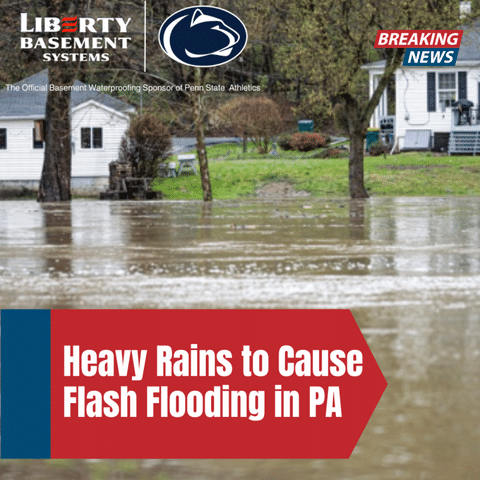Brace for Impact: Protecting Your Basement and Crawl Space from Flash Flooding

Flash floods can strike with little warning, turning a dry basement or crawl space into a costly disaster zone in mere minutes. While you can't control the weather, you can take proactive steps to minimize damage and safeguard your home's foundation.
Understanding the Threat
Water intrusion into your basement or crawl space often stems from common culprits during heavy rainfall:
-
Poor Exterior Drainage: Clogged gutters, downspouts that discharge too close to the foundation, or improper yard grading can direct immense amounts of water directly towards your home.
-
Foundation Issues: Hairline cracks, gaps around pipes, or even porous concrete can become entry points for water under pressure.
-
Sump Pump Failure: A malfunctioning sump pump, or one overwhelmed by excessive water, can quickly lead to standing water inside.
-
"Clay Bowl Effect": The loose soil used as backfill around your foundation is often more absorbent than undisturbed soil, creating a "clay bowl" that traps water and directs it towards your home.
Key Strategies for Protection
-
Exterior Matters:
-
Clean Gutters and Downspouts: Regularly clear debris to ensure water flows freely and extend downspouts at least 5-10 feet away from your foundation.
-
Grade Your Landscape: Ensure the ground around your home slopes away from the foundation, directing surface water elsewhere.
-
Temporary Barriers: For immediate threats, consider sandbags or temporary flood barriers around entry points.
-
-
Interior Defenses:
-
Sump Pump System: A reliable sump pump is your first line of defense. Consider a high-volume pump with a battery backup to ensure it operates during power outages. Regular testing is crucial!
-
Interior Drainage Systems: Systems like perimeter drains installed along the interior of your basement walls can collect seeping water and direct it to your sump pump, preventing it from reaching your living space.
-
Seal Cracks and Gaps: Inspect your basement and crawl space walls and floors for any cracks or openings and seal them with appropriate waterproof sealants. Larger or horizontal cracks may indicate structural issues requiring professional assessment.
-
Crawl Space Encapsulation: For crawl spaces, encapsulation involves covering the floor with a heavy-duty vapor barrier, sealing vents, and often includes a sump pump and dehumidifier to maintain a dry environment.
-
-
Appliance and Utility Protection:
-
Elevate Utilities: If you live in a high-risk flood area, consider elevating furnaces, water heaters, and electrical panels above potential flood levels.
-
Backwater Valves: Install "check valves" on your plumbing to prevent sewage from backing up into your home's drains during a flood.
-
-
Beyond the Build:
-
Flood Insurance: Standard homeowner's insurance typically does not cover flood damage. Invest in a separate flood insurance policy, especially if you're in a flood-prone area.
-
Emergency Kit: Have an emergency kit readily available, including important documents in waterproof containers, a battery-powered radio, and flashlights.
-
Know Your Risk & Plan: Understand your area's flood risk and establish an evacuation plan with your family.
-
Don't wait until the water rises. Taking these preventative measures can save you immense stress, costly repairs, and protect your home's long-term integrity.
